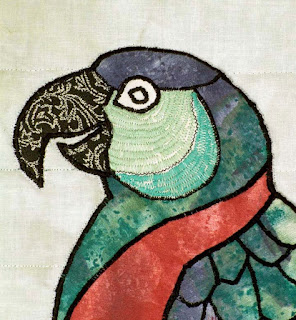To go to the beginning of this book, Tropic Moon: Memories, click HERE.
The day we were scheduled to haul out at Nanny Cay, we left
Road Harbor early that morning. As we
motored over, the clutch started to burn up.
We re-anchored, and Ed spent several hours working on it. We ended up hauling at 4:00 in the
afternoon, instead of 9:00 a.m., our scheduled time.
When I tried to use the lights that night, they wouldn’t
work. Ed found one battery was totally
dead. We didn’t know why, but it
self-destructed, and we had to throw it away.
We ran out of water that day, too; we filled the tanks with the Nanny
Cay hose. The next morning, Ed was
chipping rust in the bilge, and chipped a hole in the water tank. Actually, several holes… We had to siphon out the water we’d put in
the day before – all 120 gallons of it.
Ed went to Mike’s shop to make stainless steel plates to do a repair
job.
Our steel hull was too thin in places. As we’d done several times before, Ed wanted
to strengthen it by adding new steel plates.
He borrowed an electric grinder, and used it to cut holes in our
hull. Once he got going – he cut nine
holes. Then we had trouble getting a
welder to work on the boat, and that delayed us a few days.
Ed was down in the dumps, and having a little trouble
coping. He wanted to hire the Nanny Cay
welder, Buck, to work on our boat. Buck
kept telling Ed, “Tomorrow.” People
warned us it would always be “tomorrow” with Buck. After three days, I finally said, enough. I called BVI Welders, and they had someone
at the yard the next morning. I also
went and yelled at Buck; I felt better afterwards.
The man from BVI welders worked a long day, doing seven
patches. Then Ed decided to add large
steel plates in the stern, just under the transom. He emptied everything from the cockpit lockers at the stern of
the boat, and chipped the rust under the cockpit. The welders replaced practically the whole area, using two pieces
about 3x3 feet each, and a smaller strip between. Those large plates were much more difficult to weld. Two welders worked four or five days on that
project. On the last day the welders
worked, they were determined to finish.
They took short lunches, and were at it till 6:30 p.m. The whole area at the stern, about six feet
across, from the transom down to the rudder, was replaced. We had a yard worker do some fairing in, so
about all that showed was a seam running down either side of the stern area.
Aside from our new holes in the hull, we also had bubbles in
the paint. I used a metal spatula to
open the bubbles. Ed ground the areas
down to bare steel. We painted on two
coats of Rust Lock, a steel primer, and two coats of vinyl undercoat. We did 15-20% of the hull. We’d certainly never done such a thorough
job before!
I was getting frustrated because there hadn’t been much for
me to do. (Ed watched the welders, and
poured water on the hot steel to avoid fires.)
One day I announced to Ed that I was going to sand and paint the aft
cabin – an item that had been on my to-do list for months. Ed wasn’t keen on my making another mess,
but I started ripping the aft cabin apart, moving everything out into the
saloon, taking down book shelves, and removing doors and drawers. I sanded and painted everything, including
the part of the mizzenmast that stood in the aft cabin, and the inside of the
lockers. It took me six hours. The next day, I put everything back
together. It came out pretty good,
looking fresh and clean. Some of the
paint had been peeling off the walls.


No comments:
Post a Comment